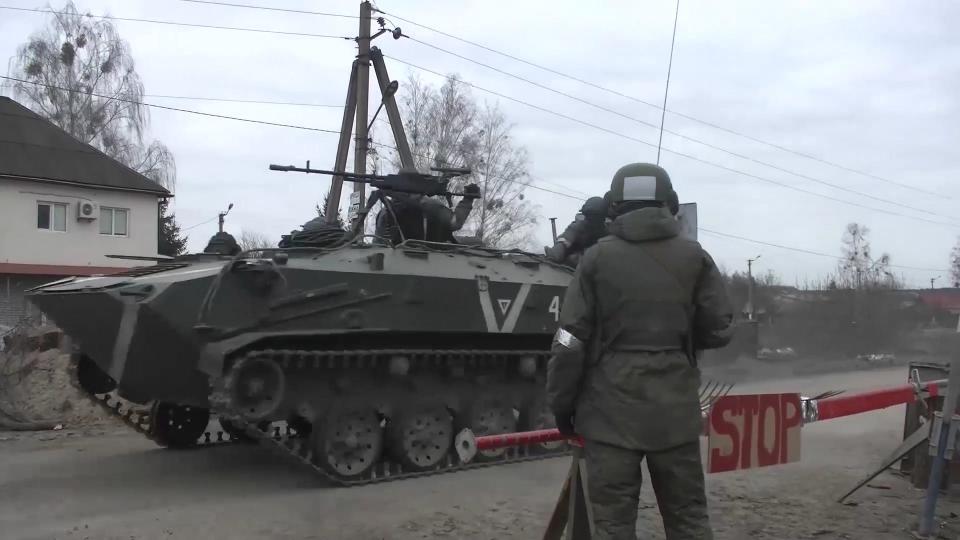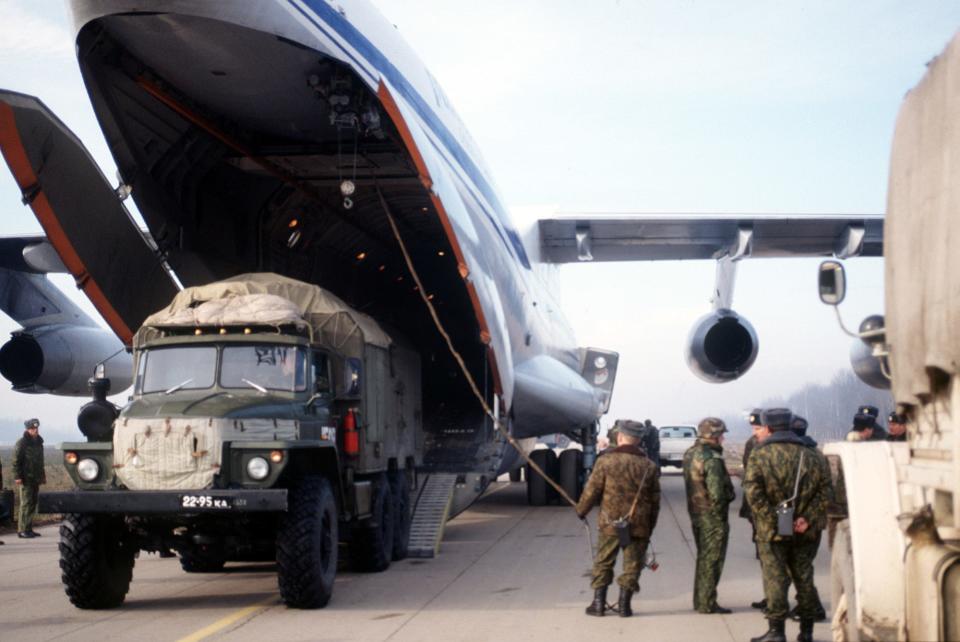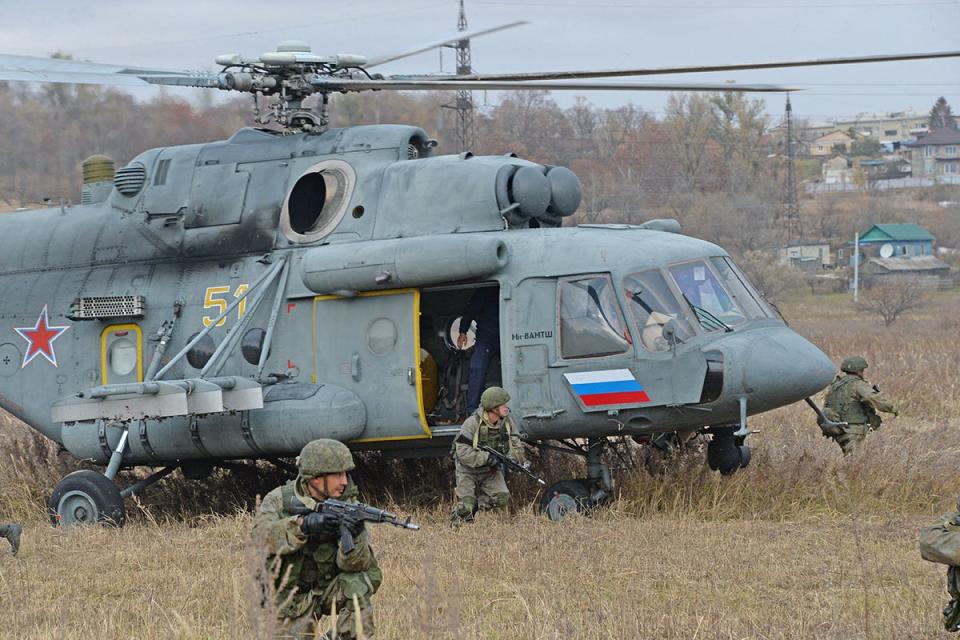After bloody failures in Ukraine, Russians are reconsidering the role of their military's 'elite' paratroopers

Russia's elite airborne force, known as the VDV, has taken heavy losses in Ukraine.
Those setbacks have led Russian commentators to question how the VDV is designed and employed.
The issues raised about the role and value of paratroopers are not unique to Russia's military.
The heavy casualties suffered by Russian paratroopers in Ukraine has one Russian expert calling for a rethink of Russia's airborne units.
Many of the recent criticisms about the performance of Russia's elite parachute force, known as the VDV, have been voiced about lightly armed airborne units since World War II.
The problems range from poorly designed vehicles to parachute drops conducted without first suppressing enemy air defenses. But in Russia's case, they also indicate severe deficiencies in the VDV.
"As after every war in the past, the future of the Airborne Forces is now being called into question," wrote commentator Alexander Timokhin in the Russian defense publication Military Review.

Despite the Kremlin's crackdown on Russian media, it is notable that non-official bloggers and publications such as Military Review have been allowed to criticize Russia's poor military performance in Ukraine.
Russia's huge airborne force, composed of 45,000 paratroopers in four divisions, is actually a separate military branch that serves as shock troops and a rapid-intervention force. Russia's invasion of Ukraine on February 24, 2022 began with a surprise VDV helicopter assault on Hostomel airfield northwest of Kyiv.
Several helicopters were shot down by anti-aircraft missiles, but the Russians still managed to seize the base. It was supposed to be an airhead for cargo planes to ferry troops and vehicles in to support the isolated paratroopers, who would then advance on Kyiv.
But the big Il-76 cargo planes never arrived. Ukrainian forces counterattacked and pinned down the paratroopers, who eventually retreated to the safety of armored columns advancing toward Kyiv. The VDV then became elite infantry spearheading the Russian armored columns — a role they were not designed for. Losses proved so severe that some paratroopers reportedly refused to fight.

What went wrong? Timokhin lists several problems with the VDV.
For one, the paratroopers were equipped with lightly armored, air-droppable armored vehicles such as the BMD-4 infantry fighting vehicle.
"The BMD-4 has a cost approximately at the level of the T-90M tank," Timokhin said, referring to one of Russia's newest tanks. "However, it can be destroyed with small arms fire."
It can be imagined what a Javelin or an NLAW anti-tank missile could do to a BMD-4 and its occupants. (This video shows an actual attack on one.)
Parachute units naturally lack heavy weapons, such as main battle tanks and artillery, for combat against enemy mechanized forces. But VDV squads were too small and weakly armed to fight on foot, according to Timokhin. They also don't have adequate air-defense systems.
Ironically, the Soviet-era VDV had an array of air-droppable equipment, including trucks and multiple rocket launchers.

"Now the Airborne Forces have a lot of vehicles that cannot be dropped by parachute," Timokhin wrote. "There are tanks, but they are all light armored vehicles with weak armor. It is not clear how to rationally use all this."
Despite having four divisions of paratroopers, Russia lacks sufficient transport planes to drop even a full division simultaneously. Nor does Russia's military have a clear concept of how to use airborne forces, such as ensuring air superiority over flight routes and the drop area or neutralizing air defenses, Timokhin added.
The VDV also recruits a "large number of selected personnel who are much better trained and more expensive than in the ground forces, whose potential cannot be fully realized," Timokhin said. At the same time, the Russian military lacks adequate infantry "for operations in the mountains and in inaccessible terrain, as well as during assaults on cities."
That point underlines the debate about the value of airborne forces — a debate that isn't unique to Russia.
Dating back to the first use of paratroopers in World War II, critics in many armies — including the US and British militaries — complained that airborne units and special forces siphon off the best soldiers, leaving less-qualified personnel for the regular infantry.

At the same time, parachute units are fragile. German Fallschirmjager were shot in their parachutes as they descended on Crete in May 1941. Though they ultimately seized the island, losses were so heavy that Hitler forbade airborne operations for the rest of the war.
British paratroopers who jumped "a bridge too far" at Arnhem were surrounded and ultimately destroyed by German mechanized troops during Operation Market-Garden in September 1944. That battle, an ignominious Allied defeat, has stood as a lesson in the limits of airborne forces.
Timokhin doesn't call for the abolition of Russia's airborne corps, calling instead for an assessment of what capabilities the force does and doesn't need, but his analysis does raise a question for military leaders in Russia and around the world.
Given the level of attrition in Ukraine — where trench-bound soldiers are expending massive amounts of ammunition — does Russia need a few elite units to stiffen poorly performing regular ground troops during key operations or is better to spread the best soldiers around and raise the overall quality of the infantry?
Michael Peck is a defense writer whose work has appeared in Forbes, Defense News, Foreign Policy magazine, and other publications. He holds a master's in political science. Follow him on Twitter and LinkedIn.
Read the original article on Business Insider


